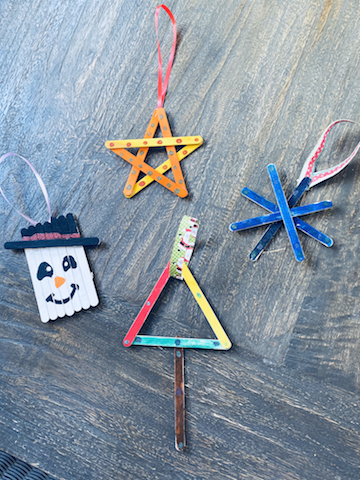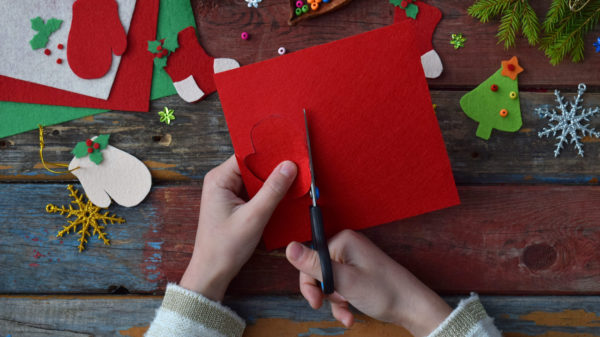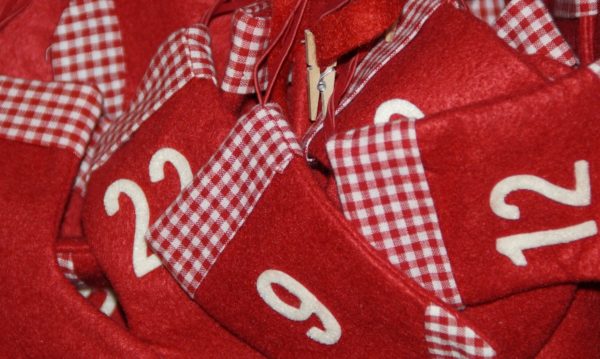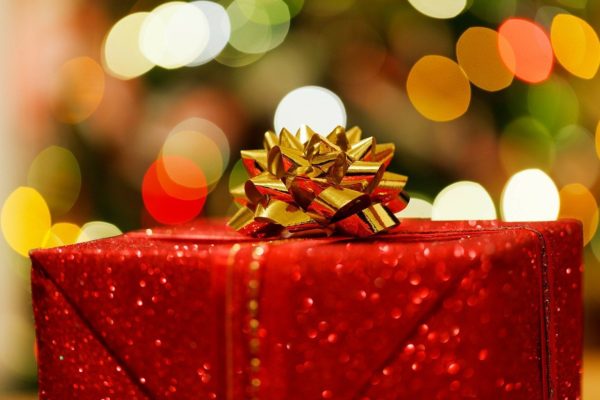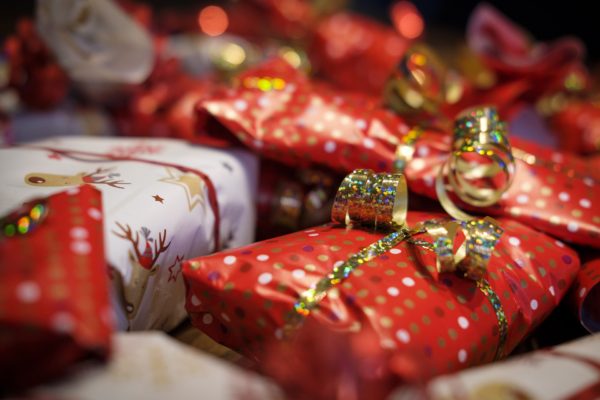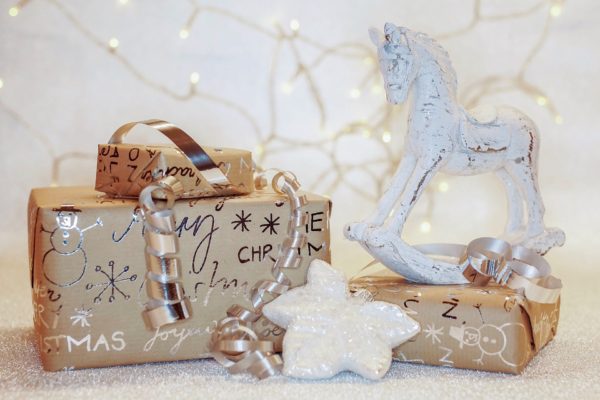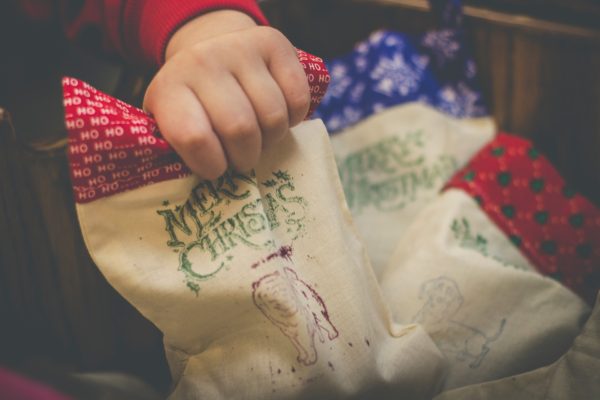Early Learning Christmas Activities
There are countless Christmas activities you can do with early years children but as educators and parents, we want to make sure that not only are they having fun, but they are also learning at the same time. I have chosen my favourite 8 early learning Christmas activities to inspire you in your planning, whether at home or in the classroom. Each activity is fun, festive and focuses on early learning goals. Enjoy!
1. Christmas Acrostic Poem
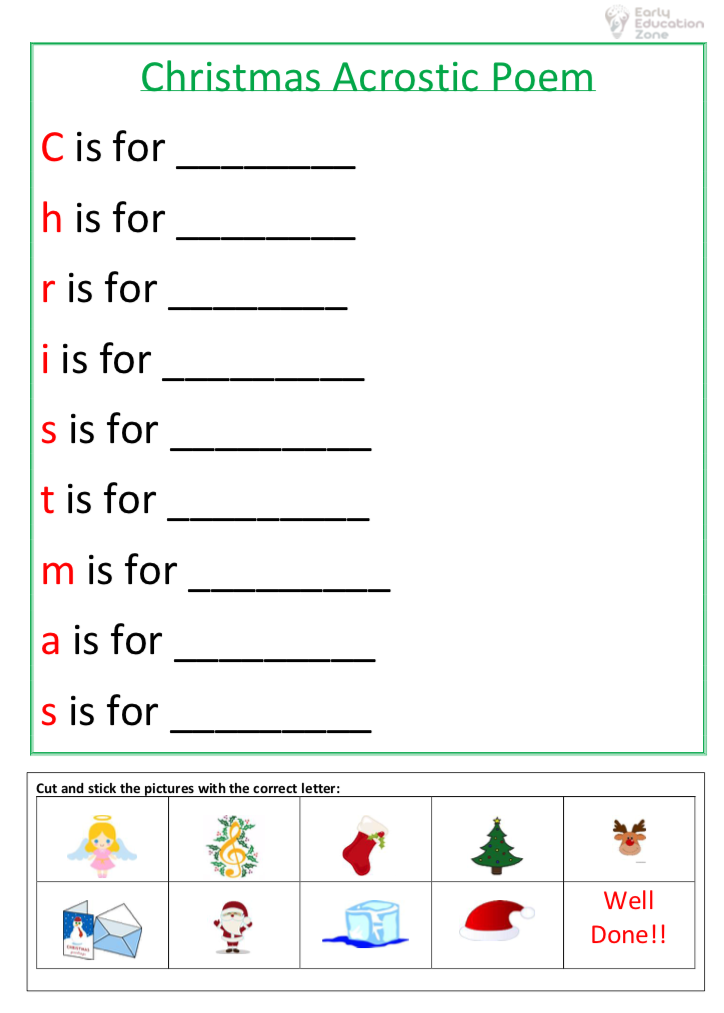
Acrostic poems are a fun way to introduce children to the concept of poetry. Finding a word that starts with each letter of the theme word encourages initial sounds recognition. This Christmas Acrostic Poem can be differentiated for each child. The pictures at the bottom can be cut out and stuck beside each corresponding letter of Christmas. For older children, there is space beside the picture where they can have a go spelling the word phonetically. You can also fill in some of the trickier sounds of the word and leave blanks for the sounds that should be easier to distinguish.
2. Popsicle Stick Puzzle
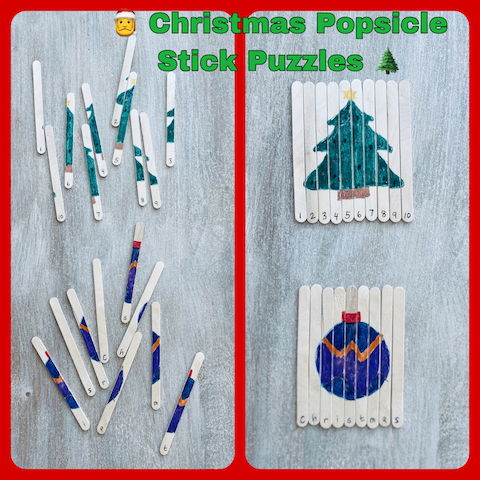 These puzzles are so versatile and can be used to practice literacy or maths. Lay the popsicle sticks out side by side and use cello tape to keep them together. Decide on your focus word or numbers and write them along the bottom, one letter or number on each stick. Draw a simple picture to accompany your theme and you have an easy, home made puzzle. Muddle up the pieces and put them back together again. I love to use this idea to practice tricky spelling words. These are so easy to make; older kids can make them for each other!
These puzzles are so versatile and can be used to practice literacy or maths. Lay the popsicle sticks out side by side and use cello tape to keep them together. Decide on your focus word or numbers and write them along the bottom, one letter or number on each stick. Draw a simple picture to accompany your theme and you have an easy, home made puzzle. Muddle up the pieces and put them back together again. I love to use this idea to practice tricky spelling words. These are so easy to make; older kids can make them for each other!
3. Christmas Tree Collage

This is a great activity for fine motor skill practice. If you child is able, get them to cut the square pieces of green paper. Provide a simple outline of a Christmas tree that they can fill in with their green squares. Cutting and sticking are both great ways to focus on hand-eye coordination. I like to use a red paper plate as the background for the tree and once finished this makes a great Christmas decoration for the house or to hang on your tree. This activity can be done with all types of Christmas shapes, so get creative!
4. Christmas Paper Chains
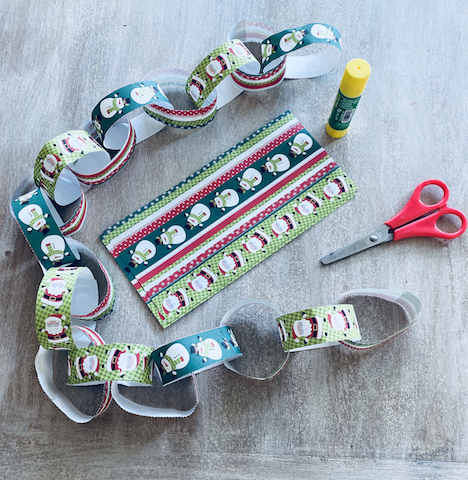
My daughter loves this activity. Cutting the strips of paper uses bilateral hand coordination, meaning both hands are doing different tasks. The simple motion of putting two ends of the paper together and sticking takes a lot of hand-eye coordination and concentration. Once another circle is added on, there is motivation to continue and see how long the paper chain can grow. I found paper printed in Christmas designs in my local craft store, but it is easy enough to cut small strips out of Christmas wrapping paper or construction paper. This is another skillful activity that creates colourful decorations for your house and tree. This kind of activity is recommended by occupational therapists for fine motor skills practice.
5. Decorate your Christmas Tree Addition
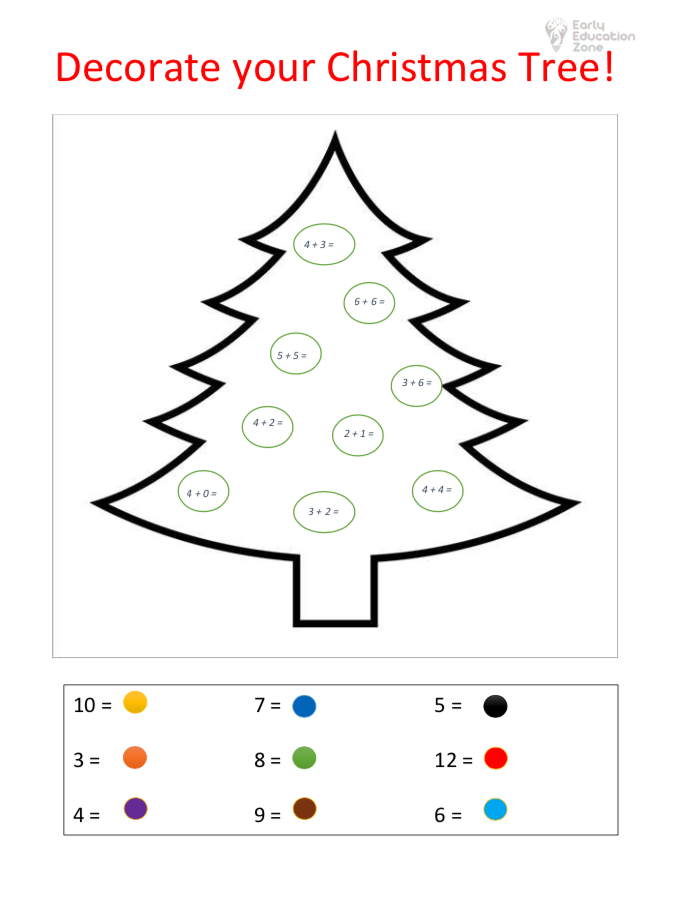
Simple addition should be fun and enjoyable. To accompany this Decorate your Christmas Tree worksheet, I used candy canes as my manipulative to do the physical adding. Then colour each bauble on the tree the correct colour according to the chart at the bottom. This is a simple, yet fun maths activity which will reinforce one to one correspondence and number recognition. If you have older children, you can encourage them to create a worksheet like this themselves. Thinking of questions and answers to addition questions is a great way to reinforce the skill.
6. Straw and Play Dough Christmas Tree
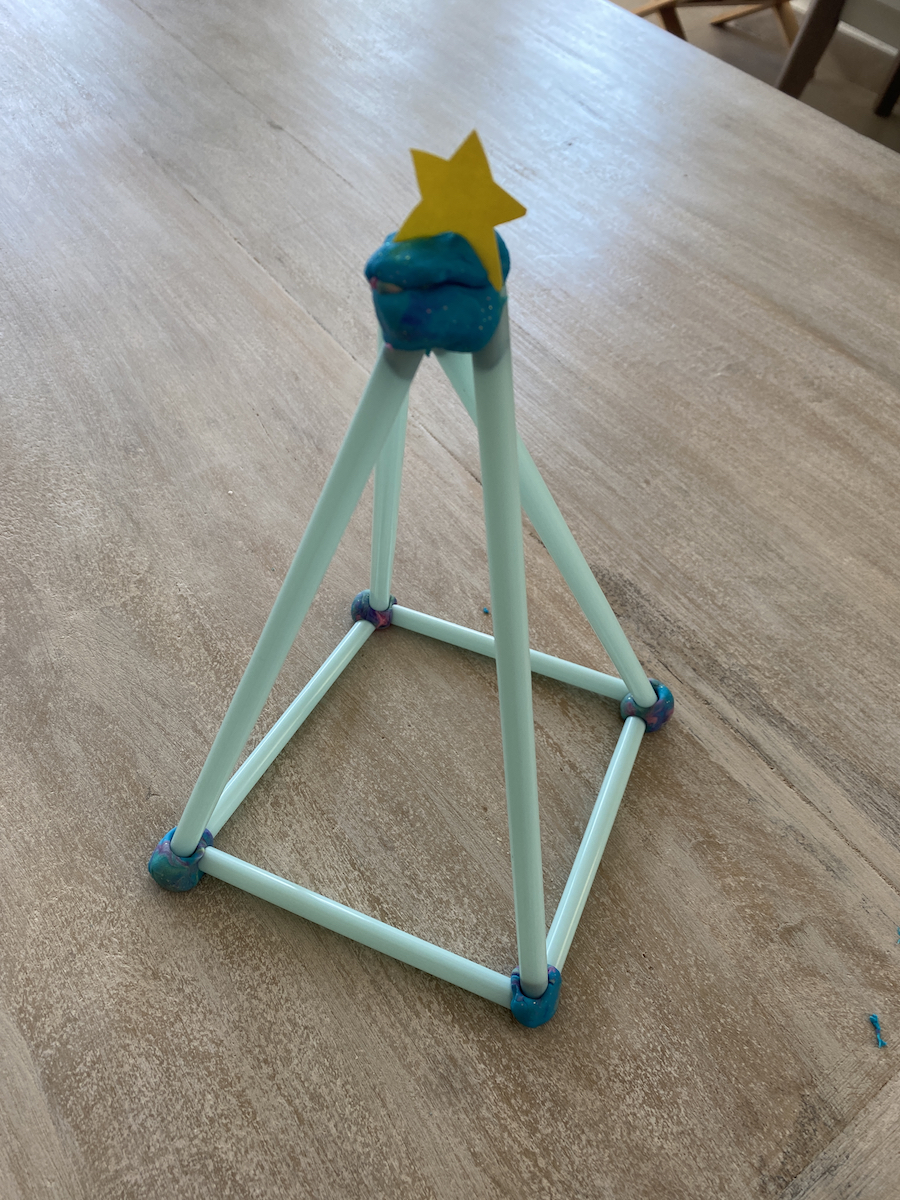
Creating STEM learning experiences for children is easy at Christmas time. Building a Christmas tree out of straws and playdough is a fun sensory activity that uses fine-motor skills and problem-solving abilities to create a structure that can stand independently. This sensory experience of engineering with straws and playdough is a great activity to do together. Younger children may need a bit of guidance but resist the urge to “show” them how to do it, and let them experiment with the project and find solutions through trial and error.
7. Candy Cane Estimating
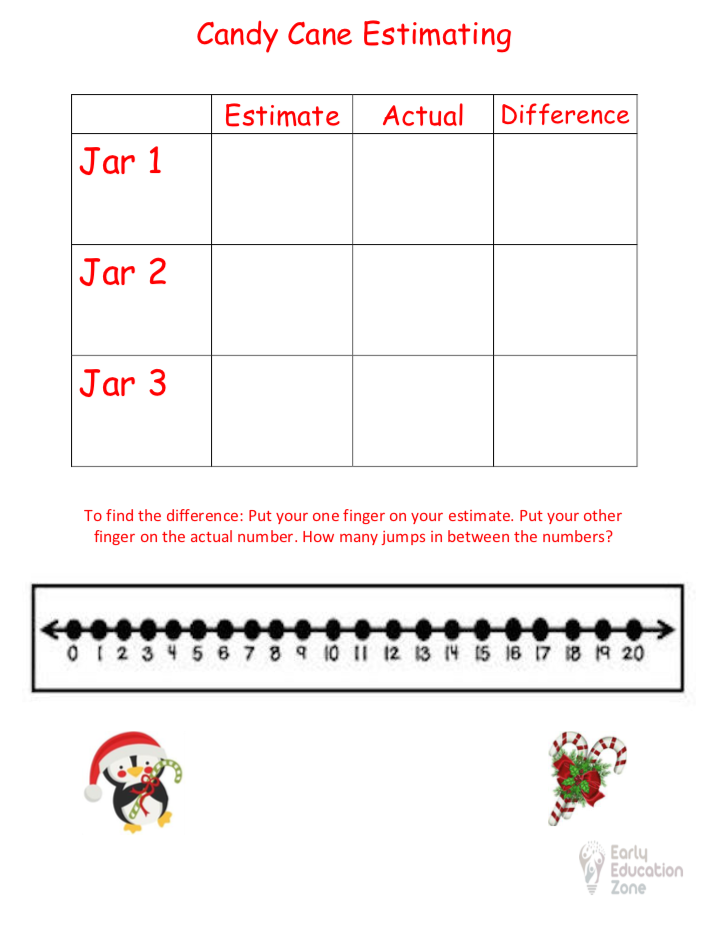
One important early learning goal is to be able to make reasonable estimates. It is important not just to focus on counting,
but also to ask children to estimate how many objects they can see and then check by counting them. Children need to be able to see the objects clearly but they must be displayed in a way that it is not easy to count them. Glass jars and candy canes are the perfect tools for this activity. Candy canes are easy to jumble together so they are not very easy to distinguish in a jar. This means children will have to use their estimation skills to decide on a reasonable guess. Perform this activity three times, changing the number in the jar each time. Using the Candy Cane Estimating worksheet and note down the estimates and the actual number. For older children, they can try to figure out how close they were to the actual number. The number line on the bottom of the worksheet will help with visualizing this. Gold coins in a jar also work well for this activity!
8. Popsicle/Lolly Stick Decorations
Popsicle/lolly sticks have so many uses, especially at this time of year! Rather than giving your child a pattern to follow, give them the sticks and some paint and ask them to come up with some ideas for decorations. Experimenting with different shapes that can be made with the sticks is fun and creative. Discuss different symbols of Christmas and how these sticks might be used to make these shapes. Embrace their creativeness, even if the results aren’t perfect! As much as I enjoy crafts with clear steps and uniform results, it is also nice to let children plan and produce unique creations which they can feel ownership over.
Early learning Christmas activities should be fun and easy!
Early learning Christmas activities are a great way of building up excitement for the holidays and bringing a deeper understanding of the concept of Christmas to little learners. Your little ones will love these fun, festive and educational activities!

